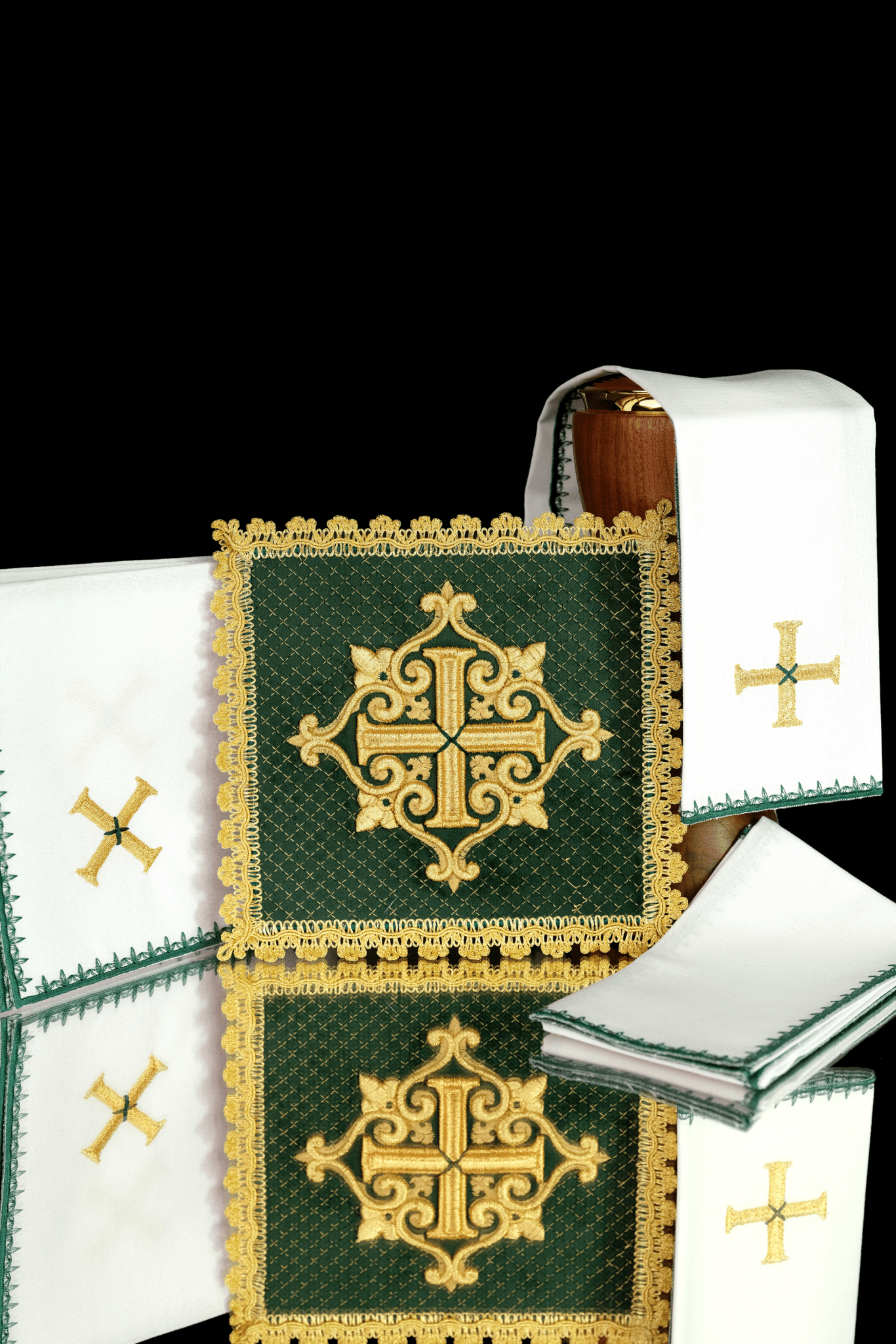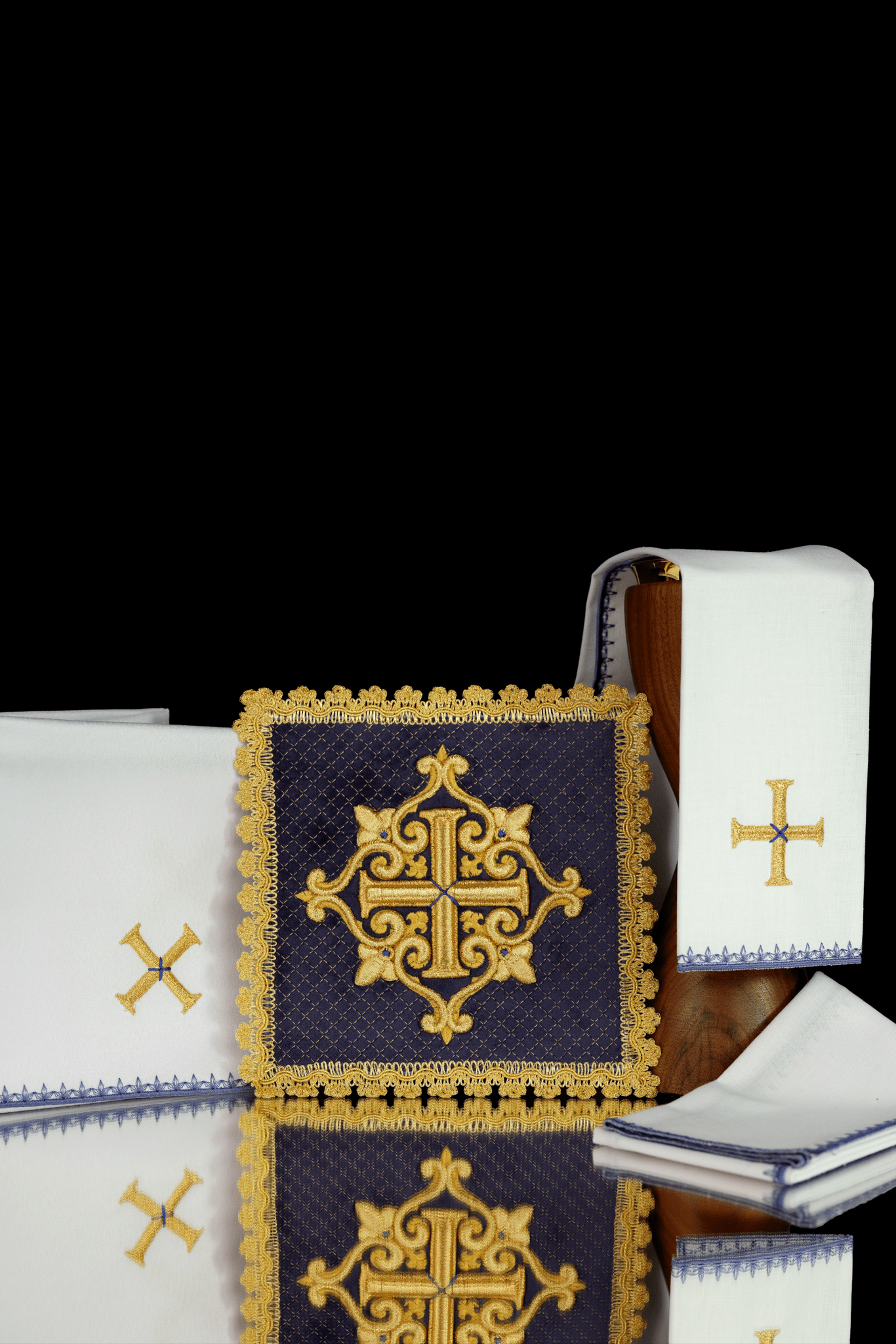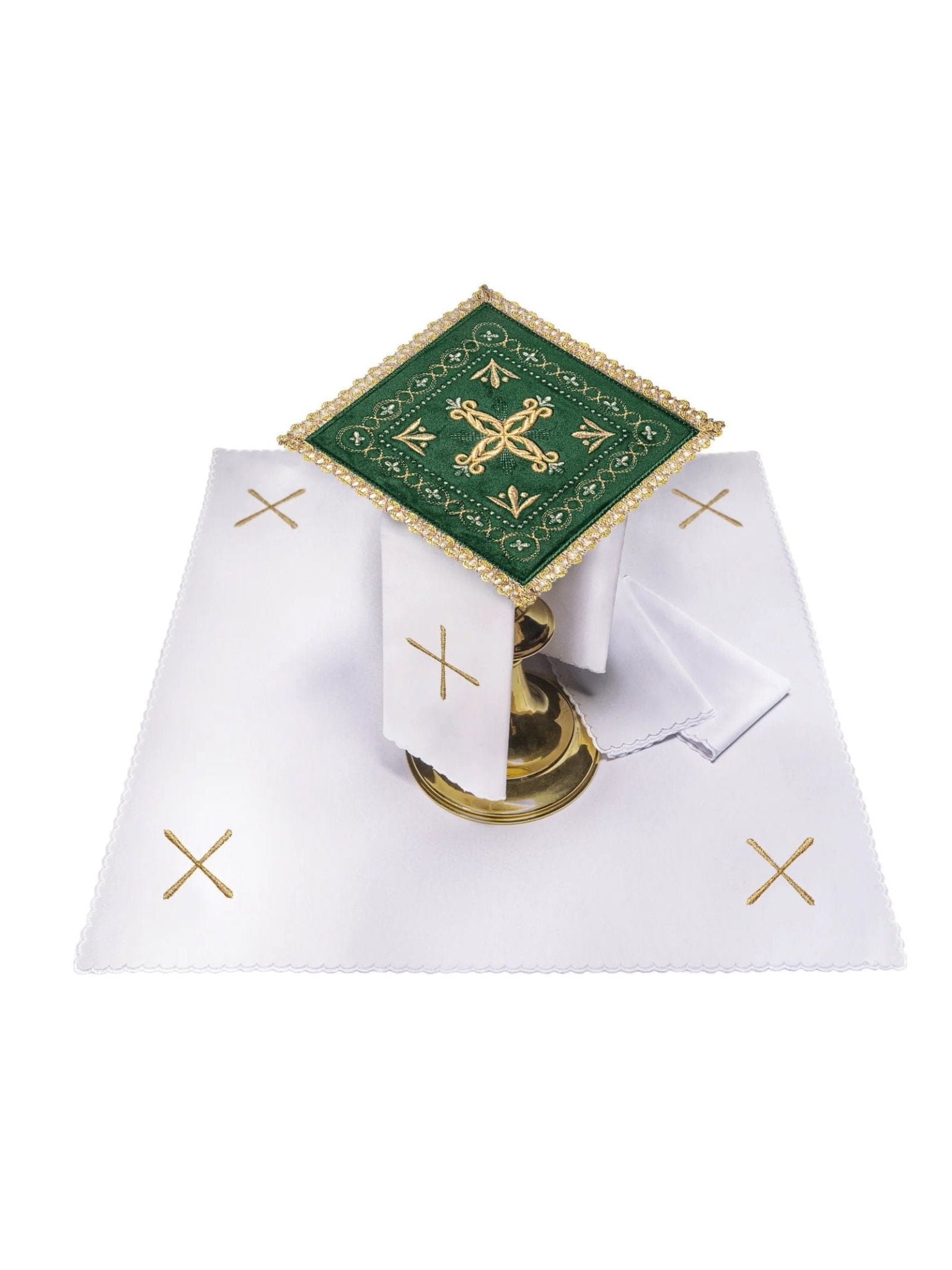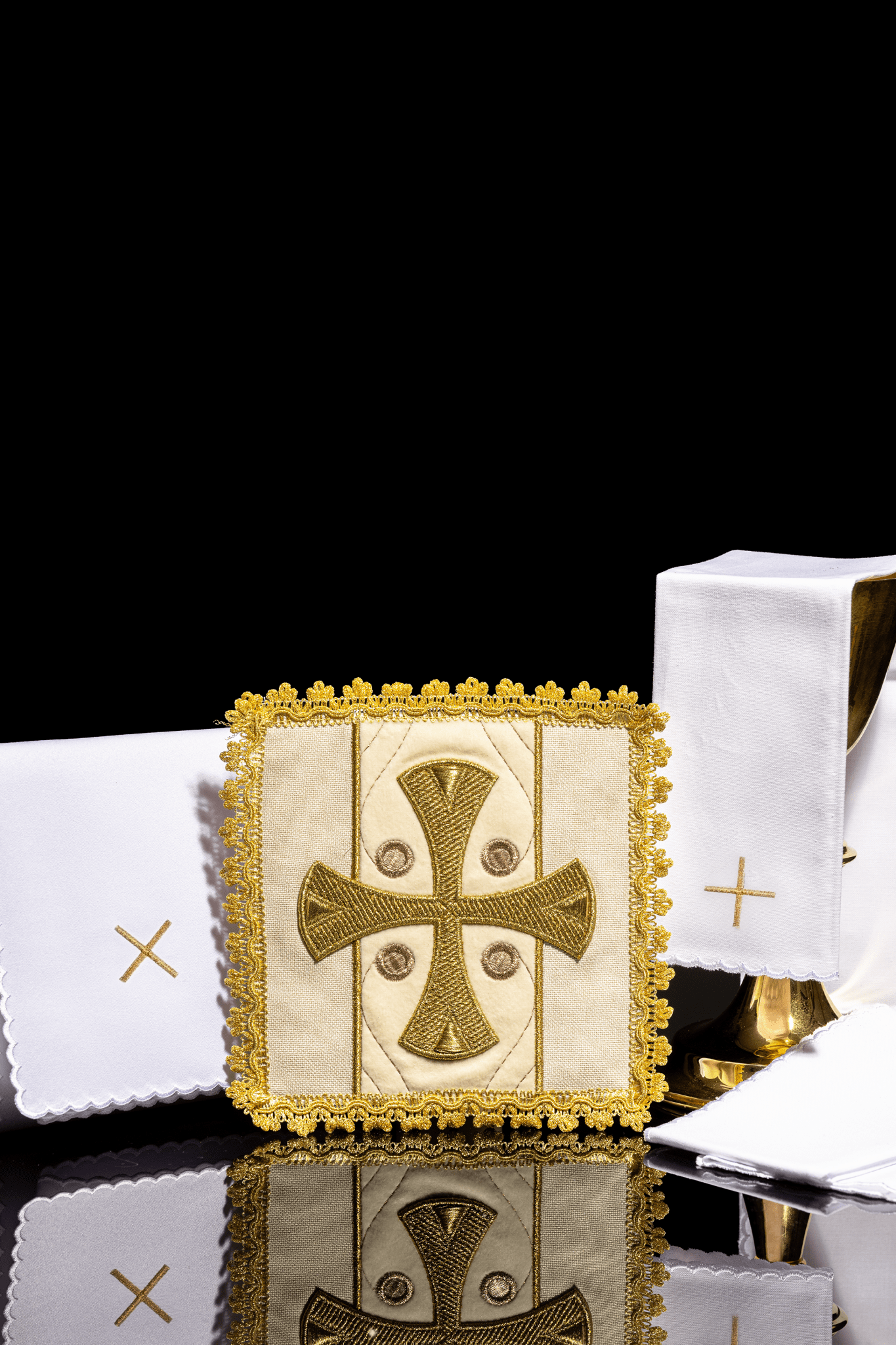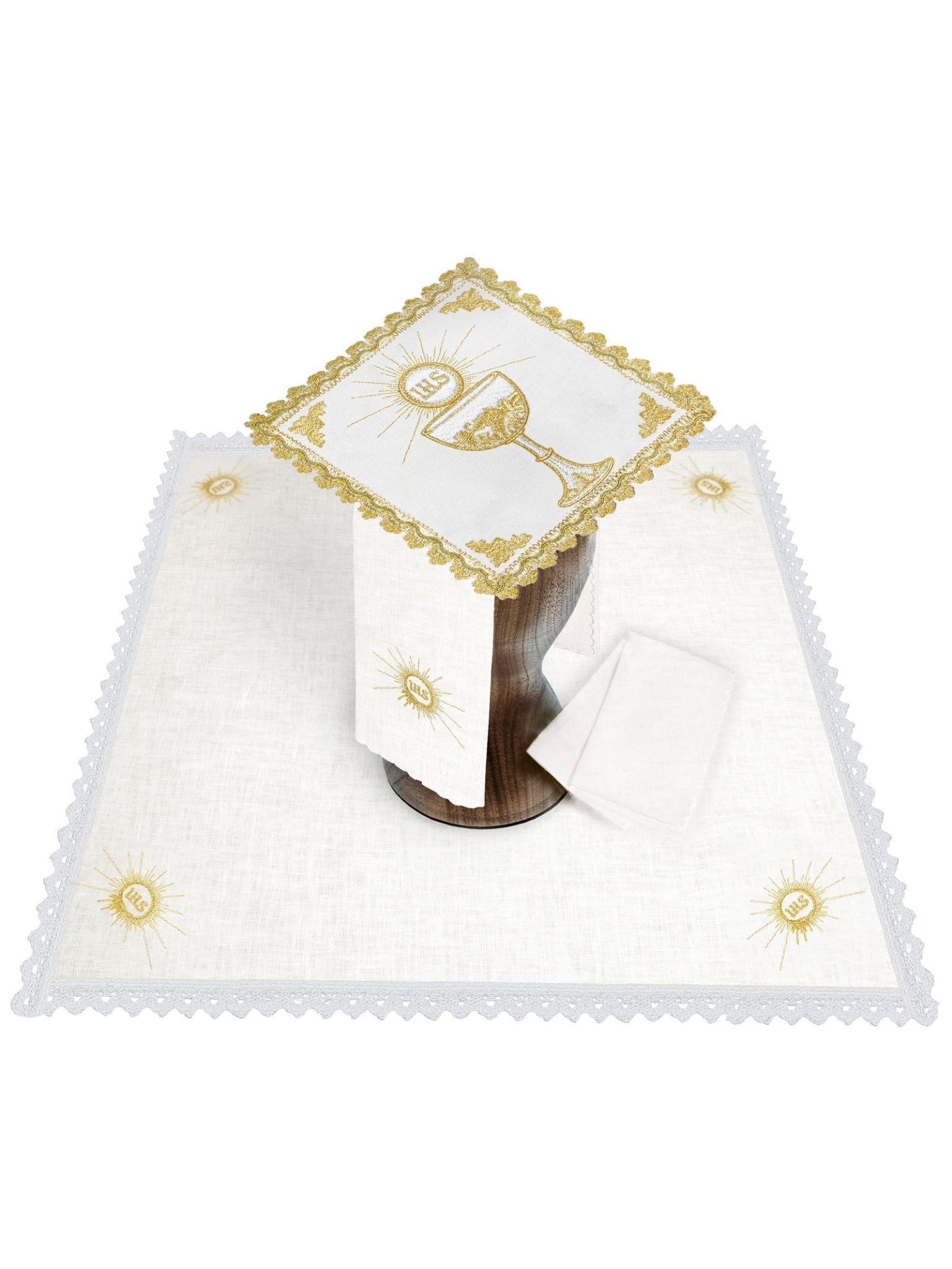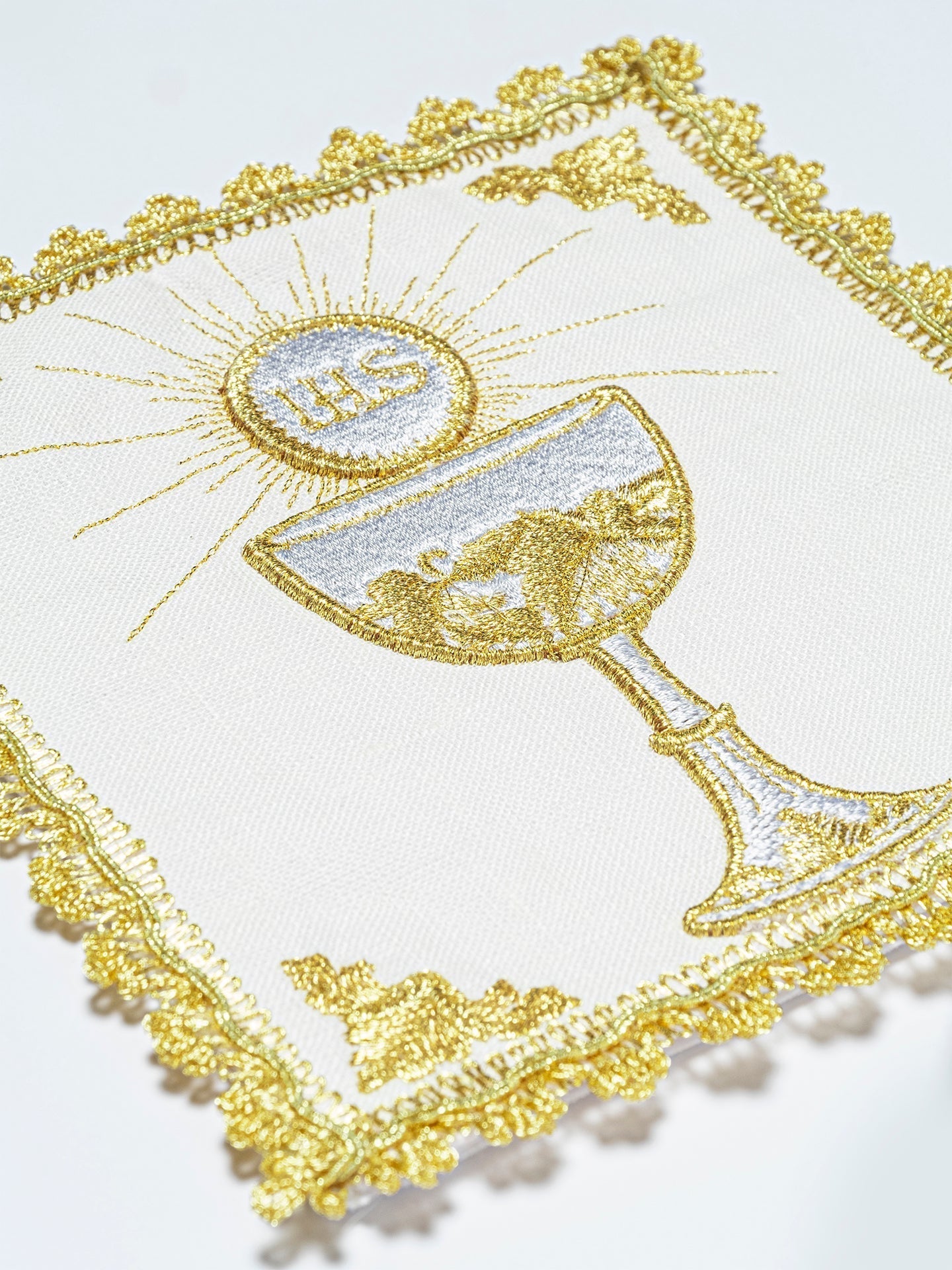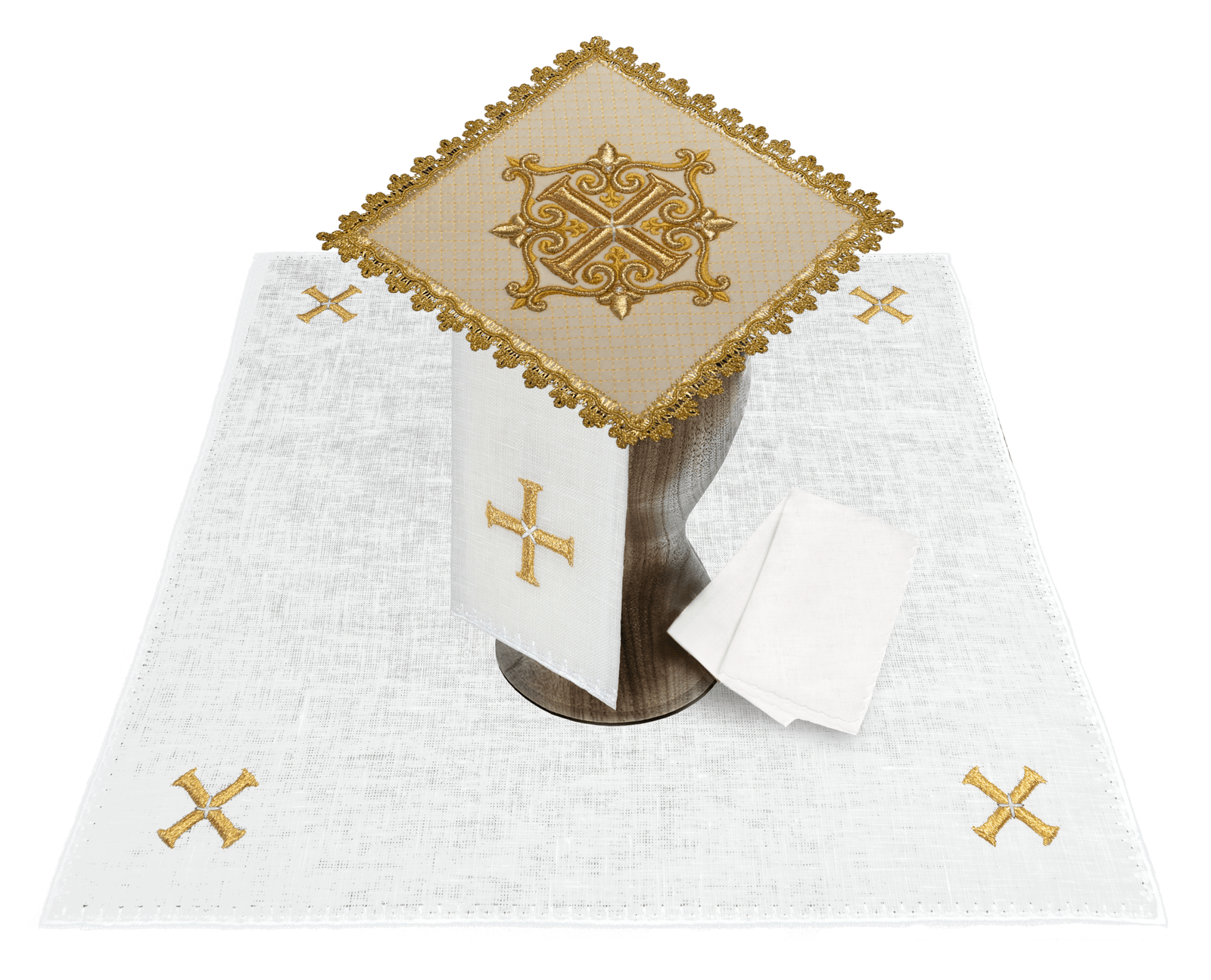Velvet Chalice Linens: Enhancing the Sacred Liturgy
The Significance of Velvet in Liturgical Linens
Velvet chalice linens represent a pinnacle of reverence and artistry in ecclesiastical textiles. The rich texture and deep colors of velvet elevate the sacred vessels used in the Eucharist, reflecting the profound significance of the sacrament itself. For centuries, velvet has been associated with royalty, nobility, and the divine, making it a fitting choice for adorning the chalice, the vessel that holds the Precious Blood of Christ.
The use of velvet in chalice linens is not merely aesthetic it also serves a practical purpose. The dense weave of velvet provides a soft yet durable surface for cleaning and protecting the chalice. This ensures that the sacred vessel remains in pristine condition, free from scratches and blemishes that could detract from its solemnity. Moreover, the absorbent nature of velvet helps to prevent spills and stains, maintaining the dignity of the altar and the surrounding liturgical space.
Crafting Exquisite Velvet Chalice Linens
The creation of velvet chalice linens is a meticulous process that requires skilled artisans and a deep understanding of liturgical tradition. The finest velvet fabrics are carefully selected for their color, texture, and durability. These fabrics are then cut and sewn with precision, often incorporating intricate embroidery or appliqué designs that reflect the liturgical season or the patron saint of the church.
The embroidery on velvet chalice linens is typically done with gold or silver threads, adding a touch of opulence and grandeur to the sacred vessels. Common motifs include crosses, grapes, wheat, and other symbols associated with the Eucharist. These designs are not merely decorative they serve as visual reminders of the sacrifice of Christ and the blessings of the sacrament.
Types of Velvet Chalice Linens
Velvet chalice linens encompass a variety of cloths and covers that are essential for the proper celebration of the Eucharist. These include:
-
The Purificator: A small rectangular cloth used to cleanse the chalice and paten after communion. Velvet purificators are particularly prized for their absorbency and softness.
-
The Pall: A stiff, square cover placed over the chalice to protect the Precious Blood from dust and insects. Velvet palls are often adorned with intricate embroidery or appliqué designs.
-
The Corporal: A large, square cloth placed on the altar upon which the chalice and paten are placed during the Eucharist. Velvet corporals provide a dignified and protective surface for the sacred vessels.
-
The Chalice Veil: A decorative cloth used to cover the chalice before and after the Eucharist. Velvet chalice veils add a touch of elegance and mystery to the sacred vessels.
-
The Bursa: A case used to store the corporal. Velvet bursas are often designed to match the chalice veil, creating a cohesive and visually appealing set of liturgical linens.
Choosing the Right Velvet Chalice Linens
When selecting velvet chalice linens, it is important to consider the following factors:
-
Quality of the Velvet: Look for velvet fabrics that are made from high-quality fibers, such as silk or rayon. These fabrics will be more durable and resistant to wear and tear.
-
Color: Choose colors that are appropriate for the liturgical season. For example, white or gold is typically used for feasts and solemnities, while purple is used for Advent and Lent.
-
Design: Select designs that are meaningful and reflective of the liturgical tradition. Avoid overly ornate or distracting patterns.
-
Size: Ensure that the linens are the appropriate size for the chalice and paten. Too small linens will not provide adequate coverage, while too large linens will be cumbersome to use.
-
Care Instructions: Follow the manufacturer's care instructions carefully to ensure that the linens remain in good condition. Velvet chalice linens should be hand-washed or dry-cleaned to prevent damage to th e delicate fibers.
The Symbolism of Colors in Velvet Chalice Linens
The colors used in velvet chalice linens are not arbitrary they are carefully chosen to reflect the liturgical season and the meaning of the Eucharist. Each color carries a specific symbolism that enhances the spiritual experience of the Mass.
-
White: Represents purity, innocence, and joy. It is used for feasts and solemnities, such as Christmas and Easter.
-
Gold: Represents glory, majesty, and divinity. It is often used interchangeably with white.
-
Red: Represents blood, fire, and passion. It is used for feasts of martyrs and on Pentecost.
-
Green: Represents hope, life, and growth. It is used during Ordinary Time.
-
Purple: Represents penance, sorrow, and preparation. It is used during Advent and Lent.
-
Rose: Represents joy in the midst of penance. It is used on Gaudete Sunday (the third Sunday of Advent) and Laetare Sunday (the fourth Sunday of Lent).
-
Black: Represents mourning and death. It is used on Good Friday and at funerals.
By understanding the symbolism of colors in velvet chalice linens, one can gain a deeper appreciation for the meaning of the Eucharist and the liturgical year.
Caring for Your Velvet Chalice Linens
Proper care is essential to maintaining the beauty and longevity of your velvet chalice linens. Follow these guidelines to ensure that your linens remain in pristine condition for years to come:
-
Hand-wash or Dry-Clean: Velvet chalice linens should be hand-washed or dry-cleaned to prevent damage to the delicate fibers. Avoid using harsh detergents or bleach.
-
Avoid Ironing: Ironing velvet can crush the pile and damage the fabric. If necessary, use a steamer to remove wrinkles.
-
Store Properly: Store velvet chalice linens in a cool, dry place away from direct sunlight. Use acid-free tissue paper to protect the linens from dust and moisture.
-
Handle with Care: Avoid pulling or snagging the velvet fabric. Be especially careful when handling linens with embroidery or appliqué designs.
-
Address Stains Promptly: Treat stains immediately to prevent them from setting. Blot the stain with a clean, damp cloth. Avoid rubbing, which can damage the fabric.
The Enduring Appeal of Velvet Chalice Linens
Velvet chalice linens have endured for centuries as a symbol of reverence and artistry in the Catholic Church. Their rich texture, deep colors, and intricate designs elevate the sacred vessels used in the Eucharist, reflecting the profound significance of the sacrament itself. By choosing and caring for velvet chalice linens with care, one can enhance the beauty and solemnity of the Mass, honoring the sacrifice of Christ and the blessings of the Eucharist.
Velvet Chalice Linens: A Reflection of Divine Beauty
In the realm of liturgical textiles, velvet chalice linens stand as a testament to the enduring beauty and reverence that adorn the sacred rituals of the Church. These exquisite pieces, crafted from the finest velvet, are more than mere cloths they are symbols of devotion, artistry, and the profound mystery of the Eucharist.
The History and Tradition of Chalice Linens
The use of chalice linens dates back to the early Church, where they served the practical purpose of protecting the sacred vessels from dust and impurities. Over time, these linens evolved into elaborate works of art, reflecting the growing appreciation for the beauty and solemnity of the Mass. Velvet, with its rich texture and luxurious appearance, became a favored material for chalice linens, particularly during the medieval and Renaissance periods.
Velvet: A Material Fit for Royalty and the Divine
Velvet's association with royalty and nobility made it a natural choice for adorning the chalice, the vessel that holds the Precious Blood of Christ. The deep colors and soft texture of velvet evoke a sense of awe and reverence, enhancing the spiritual experience of the Mass. In addition to its aesthetic appeal, velvet is also a practical choice for chalice linens. Its dense weave provides a durable and absorbent surface for cleaning and protecting the sacred vessels.
The Art of Embroidered Velvet Chalice Linens
Many velvet chalice linens are adorned with intricate embroidery, often featuring gold or silver threads. These designs typically depict Christian symbols, such as crosses, grapes, wheat, and lambs. The embroidery is not merely decorative it serves as a visual reminder of the sacrifice of Christ and the blessings of the Eucharist. The skilled artisans who create these embroidered linens imbue them with a sense of devotion and artistry, transforming them into sacred objects of beauty.
The Importance of Maintaining Velvet Chalice Linens
Proper care is essential to maintaining the beauty and longevity of velvet chalice linens. These delicate fabrics require gentle handling and specialized cleaning techniques. Regular cleaning helps to remove dust and stains, preventing them from damaging the fibers over time. When storing velvet chalice linens, it is important to protect them from moisture and direct sunlight, which can cause fading and discoloration.
Velvet Chalice Linens: A Timeless Expression of Faith
Velvet chalice linens represent a timeless expression of faith and devotion. Their beauty and artistry enhance the sacred rituals of the Church, reminding us of the profound mystery of the Eucharist. By choosing and caring for velvet chalice linens with reverence, we honor the sacrifice of Christ and the blessings of the sacrament.
Elevating the Eucharist with Exquisite Velvet Chalice Linens
The Eucharist, the most sacred act in the Christian faith, deserves to be celebrated with the utmost reverence and beauty. Velvet chalice linens play a crucial role in enhancing the solemnity and grandeur of the Mass. These luxurious textiles, crafted from the finest velvet and adorned with intricate designs, elevate the chalice and paten, transforming them into objects of divine beauty.
The Role of Color in Velvet Chalice Linens
The colors used in velvet chalice linens are not merely aesthetic choices they are carefully selected to reflect the liturgical season and the meaning of the Eucharist. Each color carries a specific symbolism that enhances the spiritual experience of the Mass. White, for example, represents purity and joy, while red symbolizes blood and sacrifice. By understanding the symbolism of colors, one can gain a deeper appreciation for the meaning of the Eucharist and the liturgical year.
The Craftsmanship Behind Velvet Chalice Linens
The creation of velvet chalice linens is a labor of love, requiring skilled artisans and a deep understanding of liturgical tradition. These artisans carefully select the finest velvet fabrics, often incorporating intricate embroidery or appliqué designs that reflect the liturgical season or the patron saint of the church. The embroidery is typically done with gold or silver threads, adding a touch of opulence and grandeur to the sacred vessels.
The Significance of Each Chalice Linen
Each chalice linen plays a specific role in the celebration of the Eucharist. The purificator is used to cleanse the chalice and paten after communion, while the pall protects the Precious Blood from dust and insects. The corporal provides a dignified and protective surface for the chalice and paten, and the chalice veil adds a touch of elegance and mystery to the sacred vessels. Together, these linens create a harmonious and visually stunning ensemble that enhances the spiritual experience of the Mass.
Velvet Chalice Linens: An Investment in Beauty and Tradition
Investing in high-quality velvet chalice linens is an investment in beauty and tradition. These exquisite textiles will enhance the solemnity and grandeur of the Mass for years to come. By choosing and caring for velvet chalice linens with reverence, we honor the sacrifice of Christ and the blessings of the Eucharist. They are more than just cloths they are symbols of faith, devotion, and the enduring beauty of the Church.
Finding the Perfect Velvet Chalice Linen Set
When selecting a velvet chalice linen set, consider the specific needs of your church and the liturgical seasons. A complete set typically includes a purificator, pall, corporal, chalice veil, and bursa. Choose colors and designs that are appropriate for the liturgical year and that reflect the unique character of your parish. With proper care, your velvet chalice linen set will be a cherished part of your church's liturgical tradition for generations to come.




